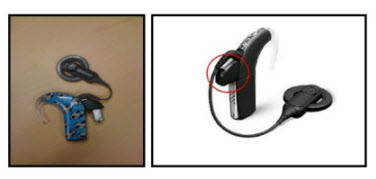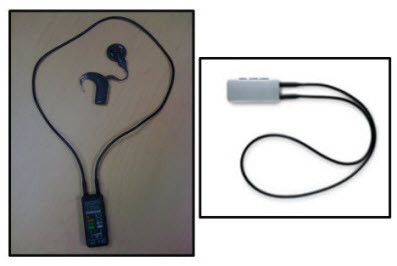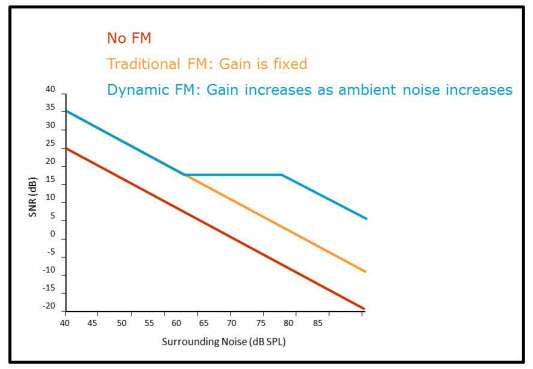Contemporary Audiologic Management to Optimize Cochlear Implant Benefit
July 2012
Jace Wolfe, PhD, CCC-A, and Erin C. Schafer, PhD, CCC-A
Introduction
The cochlear implant (CI) is the most successful sensory prosthetic device in medicine. Children who receive a CI at an early age and receive appropriate habilitation often develop age-appropriate speech and language, and post-lingually deafened adults are often able to score near 100% correct on open-set assessments of sentence recognition in quiet (Moog & Geers, 2003; Gifford, Shallop, & Peterson, 2008). However, speech recognition in noise continues to be challenging for most CI users, with studies indicating that sentence recognition typically decreases by 40% to 50% in speech-to-noise ratios (SNR) encountered in typical, real-world situations as compared with performance in quiet (Schafer & Thibodeau, 2004; Wolfe et al., 2009).
CI manufacturers are developing technology to improve performance in noise, but the most immediate and successful method to optimize speech recognition in noise is through the use of a personal frequency-modulation (FM) system. A personal FM system consists of a transmitting unit that contains a small microphone worn near the mouth of the primary (e.g., teacher, parent, spouse) and a miniature, body-worn transmitter that wirelessly delivers a signal to a receiver that is coupled to the recipient's CI sound processor.
The audiologist is faced with many decisions in the selection and optimization of a personal FM system for CI recipients. For instance, personal FM receivers may be electrically coupled via direct auditory input (DAI; see Figure 1) or coupled to an induction neckloop and electromagnetically connected with the telecoil of the sound processor (see Figure 2).

Figure 1. Personal FM receiver electrically coupled via direct auditory input (DAI)

Figure 2. Personal FM receiver coupled to an induction neckloop and electromagnetically connected with the telecoil of the sound processor
There is a paucity of studies that examined the advantages and limitations of each type of personal FM for CI users; however, it is clear from our previous research that the selection of signal processing parameters in the implant sound processor and in the FM system may influence the outcome experienced by the user. Hence, the purpose of this paper is to discuss various types of signal processing in CI sound processors and personal FM systems and to review the result of recent studies evaluating DAI and neckloop personal FM systems. Furthermore, a short discussion on verification of FM for CI users will be provided.
Influence of Signal Processing on FM Performance
Signal processing in the personal FM system and the CI sound processor can significantly influence speech recognition and sound quality. The goal of FM use is to deliver a signal that is comfortable, possesses acceptable sound quality across a variety of listening environments, and increases the salience of the signal of interest in the presence of competing noise and reverberation. Historically, audiologists programmed FM systems so that the FM signal provided a higher output (i.e., by 10 dB) than the signal arriving at the hearing aid or CI sound processor microphone in order for the wearer to differentiate the desired signal (presuming it comes from the FM system) from the surrounding background noise. However, this recommendation did not take into account that users preferred different gain settings across various listening environments (Lewis & Eiten, 2003). For instance, in quiet environments, FM users prefer little to no FM gain. However, in noisy situations, users prefer an FM gain of +24 dB to ensure that the FM signal may be heard over the competing noise. The recommended FM-gain setting of +10 dB was recognized as a compromise between the ideal setting for quiet environments and the higher-gain setting preferred for optimal performance in noise.
Dynamic (adaptive) FM was introduced as a potential solution to this problem. Theoretically, Dynamic FM provides 10 dB of gain to the FM signal in quiet environments when speech is present at the FM microphone. As the ambient noise level exceeds 57 dB SPL, the gain is increased adaptively until it reaches a maximum FM gain of +24 dB at an ambient noise level of 75 dB SPL (see Figure 3). In order to improve sound quality in quiet settings, no FM gain is provided when speech is not present at the FM microphone.

Figure 3. Gain increased adaptively until it reaches a maximum FM gain of +24 dB at an ambient noise level of 75 dB SPL
In order to evaluate the potential benefit of Dynamic FM relative to a traditional, fixed-gain FM system, Wolfe et al. (2009) used a traditional FM receiver set to +10 dB FM gain versus a Dynamic FM receiver and compared speech recognition in quiet and in noise for CI recipients. Advanced Bionics CI users obtained substantially better speech recognition in noise with a Dynamic FM receiver relative to the fixed-gain FM receiver. The improvement provided by the Dynamic FM receiver was greater at higher noise levels (i.e., 75 dB A competing noise versus 65 dB A noise), which reflects the benefit of higher FM gain at the higher competing noise levels. These findings are very encouraging for CI recipients, given the aforementioned difficulties CI users experience in noise, especially at higher noise levels.
In the first phase of the Wolfe et al. (2009) study, users of Cochlear Nucleus® Freedom sound processors were tested without the use of autosensitivity control (ASC), which is an input processing strategy designed to improve performance in noise and, at the time, was not recommended for use with FM. Without the use of ASC, Nucleus Freedom users scored near 0% correct in noise, both with and without the use of ASC. In a second phase of the Wolfe et al. (2009) study, performance was re-evaluated while subjects using the Freedom implants used ASC. Speech recognition in noise improved considerably with ASC and was comparable to performance of a group of adults using Advanced Bionics's Harmony™ sound processors. Also, for both processor groups, performance was better with Dynamic FM compared with the fixed-gain FM system.
In another study, Wolfe et al. (in press) compared FM performance obtained with the Nucleus Freedom and Nucleus 5 sound processors. This study also found a significant effect of signal processing strategy on FM performance. Specifically, for the Nucleus 5 sound processor, Cochlear™ developed a two-stage ASC processing pathway in which the signal from the CI processor microphone is subjected to ASC and then mixed with the FM signal. After mixing, a second stage of ASC is provided to the combined FM/sound processor microphone signal. Wolfe et al. (in press) found better performance with the two-stage ASC in the Nucleus 5 sound processor as compared with the one-stage ASC system previously used. In addition, Nucleus 5 users obtained better performance in noise with dynamic FM compared with traditional FM.
Neckloop and DAI FM Systems
In a more recent study, Wolfe et al. (in press) compared speech recognition in quiet and in noise for a group of Nucleus 5 users who were assessed with DAI systems, neckloop systems, and multiple-input processing schemes within the CI sound processor. Of note, there was a trend toward better performance with the DAI system relative to performance with the neckloop system. Numerous factors may explain this finding. First, the telecoil of the Nucleus 5 sound processor is oriented toward the horizontal plane when worn on the ear, and, as a result, it is designed to detect electromagnetic signals arriving from a telephone. In contrast, the orientation of the telecoil may reduce the detection of an electromagnetic signal arriving from a neckloop (or room loop for that matter). Additionally, it is possible that the starting gain of the induction FM neckloop was not matched to the starting gain of the DAI system. Indeed, in a separate study, Schafer, Musgrave, et al. (2012) found differences in performance between speech recognition in noise obtained with DAI versus neckloop FM systems set to equivalent fixed-gain settings, with greater benefit measured with the neckloop system. Following this study, Schafer, Romine, Huynh, and Jiminez (2012) conducted electroacoustic measures to evaluate FM output from the neckloop and DAI receivers and determined that the starting FM gain was dissimilar between the two systems. Our future research will examine the feasibility of electroacoustic measures for FM systems and CIs and how these measures correlate to speech recognition performance of individuals using implants coupled to FM systems.
There are practical advantages and disadvantages to DAI and neckloop FM systems for users of CIs. First, a DAI FM may provide a more consistent signal to the user than an induction neckloop system. DAI systems are not plagued by the potential waxing and waning of FM signal strength that may occur with neckloop systems when the user moves his or her head relative to the neckloop. Also, it is possible that the active telecoil within the CI processor will pick up unwanted electromagnetic interference (in the form of a buzzing sound) from fluorescent lights, older computer monitors, and other sources. Further, some children and adults do not like to wear a loop system around the neck. In contrast, bilateral FM input may be provided with the purchase of one neckloop receiver as opposed to two DAI FM receivers; therefore, neckloop FM systems are the most economically attractive option for users of bilateral CIs or bimodal stimulation (i.e., implant on one ear and hearing aid on the opposite ear). Second, some adults and older children may prefer neckloop receivers, which allow for manual changes to FM gain or volume with controls on the front or side of the neckloop receiver. Finally, anecdotal experience suggests that some CI users report less FM interference noise when using neckloop FM systems because of the greater separation between the FM radio receiver and the radio frequency transmitting coil of the implant sound processor worn on the head.
Verification and Validation of FM Performance
The fitting of FM systems for CI recipients has been simplified over the past several years because impedance-matched cords and cables are no longer necessary to connect CIs to FM systems. Instead, there are (a) DAI FM receivers specifically designed for certain sound processors and (b) universal DAI receivers that may be connected via specialized earhooks, battery covers, or adaptors from the implant manufacturer or neckloop FM receivers that may be used with all contemporary sound processors. Despite the simpler connections, audiologists must conduct verification and validation measures to ensure that each CI recipient receives adequate benefit and performance with the FM system. Verification should be completed as part of a three-stage process. First, the audiologist should use listening earphones for Cochlear devices or the Harmony Listening Check device from Advanced Bionics to monitor the FM signal received by the CI sound processor. This simple step will often identify potential problems that may exist in the hardware for the CI sound processor (i.e., DAI port or telecoil), the CI/FM adaptor, and the FM system. At this time, there is no commercially available listening check technology for MED-EL devices.
Second, for recipients capable of participating in speech recognition assessment, it is critical that the audiologist evaluate speech recognition in quiet and in noise both with and without the FM system. For the FM condition, the lapel microphone of the FM system should be suspended 6 to 8 inches directly in from of the center of a single-cone loudspeaker used to deliver the speech signal. We recommend using either (a) an adaptive test to evaluate speech recognition performance in noise, which will avoid ceiling (100%) and floor (0%) effects that may occur with fixed-SNR stimuli or (b) a fixed-SNR test using signal levels that represent the most common environment where the FM is to be used (e.g., 0 to + 5 dB for a school classroom). No difference in performance should be obtained in a quiet condition, while a statistically significant improvement in performance should be obtained with use of personal FM in noise.
Finally, audiologists should administer questionnaires to validate real-world benefit. While a discussion of appropriate questionnaires for this purpose is outside the scope of this article, we would like to stress the value of soliciting information from parents, providers, and teachers in order to better understand and document the benefit the child is receiving from the technology in his or her typical listening environments.
Of course, we would be remiss if we did not mention the need to orient parents, caregivers, and school officials to the proper use of FM technology. Many audiologists use sophisticated hearing technology on a daily basis, and, as a result, its use almost becomes second nature. We must remember, however, that families and school personnel are not intimately acquainted with contemporary hearing technology and may be intimidated by the use of personal FM technology. The authors' collective experience suggests that all too often, the benefit of well-fitted FM technology is not fully recognized because of misuse once it leaves our clinic. The responsibility for this misfortune falls squarely on the shoulders of the audiologist.
Summary
The use of personal FM systems improves CI recipients' speech recognition in noise and in other challenging environments. Optimal performance is most often obtained with the use of Dynamic FM, appropriate signal processing in the CI sound processor, and DAI FM receivers. Also, verification, validation, and effective counseling and orientation are key in ensuring that CI users experience success with a personal FM system.
About the Authors
Jace Wolfe is the director of audiology at the Hearts for Hearing Foundation. He also is an adjunct assistant professor in the Audiology Department at the University of Oklahoma Health Sciences Center and Salus University. He previously served as the editor for the American Speech-Language-Hearing Association Special Interest Group 9, Hearing and Hearing Disorders in Childhood's Perspectives and is currently a co-editor for the Plural Publishing, Inc. Core Clinical Concept Series on Cochlear Implants. Dr. Wolfe has published numerous articles in peer-reviewed and trade journals and is the first author of the textbook Programming Cochlear Implants. His areas of interest are pediatric amplification and cochlear implantation, personal FM systems, and signal processing for children. He provides clinical services for children and adults with hearing loss and is also actively engaged in research in several areas pertaining to hearing aids, cochlear implants, and personal FM systems. Contact him at jace.wolfe@heartsforhearing.org.
Erin C. Schafer is an associate professor in the Department of Speech and Hearing Sciences at the University of North Texas, where she conducts rehabilitative/habilitative research and teaches graduate courses in the areas of assessment, aural rehabilitation, and habilitation of children with hearing loss. She serves as an educational audiology consultant for local school districts. Her current research focuses on strategies to enhance communication abilities of children and adults who have auditory disorders and on hearing loss, hearing aids, and cochlear implants. Dr. Schafer received a BS degree in communication sciences from Texas Woman's University and MS and PhD degrees in audiology from The University of Texas at Dallas. She serves the editor of the Journal of Educational Audiology and is past president of the Scott Haug Audiology Foundation. Contact her at erin.schafer@unt.edu.
References
Lewis, D., & Eiten, L. R. (2003). Assessment of advanced hearing instrument and FM technology. In D. Fabry (Ed.), ACCESS: Achieving Clear Communication Employing Sound Solutions. Proceedings of the First International FM Conference. (pp. 167–173). Warrenville, IL: Phonak.
Moog, J. S., & Geers, A. E. (2003). Epilogue: Major findings, conclusions, and implications for deaf education. Ear and Hearing, 24(1), 121S–125S.
Gifford, R. H., Shallop, J. K., & Peterson, A. M. (2008). Speech recognition materials and ceiling effects: Considerations for cochlear implant programs. Audiology & Neurotology, 13, 193–205.
Schafer, E. C., Musgrave, E., Momin, S., Sandrock, C., Romine, D., & Huynh, C. (2012). A preliminary approach to electroacoustic analysis of personal FM receivers coupled to cochlear implants. Manuscript in preparation.
Schafer, E. C., Romine, D., Huynh, C., & Jiminez, R. (2012). Speech recognition in noise and subjective perceptions of neckloop FM receivers with cochlear implants. Manuscript submitted for publication.
Schafer, E. C., & Thibodeau, L. M. (2004) Speech recognition abilities of adults using cochlear implants with FM systems. Journal of the American Academy of Audiology, 15, 678–691.
Wolfe, J., Schafer, E. C., Heldner, B., Mülder, H., Ward E., & Vincent, B. (2009). Evaluation of speech recognition in noise with cochlear implants and dynamic FM. Journal of the American Academy of Audiology, 20, 409–421.
Wolfe, J., Schafer, E. C., Parkinson, A., John, A., Hudson, M., Wheeler, J., & Mucci, A. (in press). Effects of input processing and type of personal FM system on speech recognition performance of adults with cochlear implants. Ear and Hearing.
Resources
- ASHA Resources for Educational/Pediatric Audiologists
- Audiology 2012: Managing Students With Hearing Loss, ASHA Online Conference, October 17–29, 2012
- Educational Audiology Association
- FM Systems "vs." Soundfields
- FM Verification for the 21st Century
- New FM System Codes Are Closer to Reality
- Optimizing the Use of FM Systems with Cochlear Implants
- SIG 9, Hearing and Hearing Disorders in Childhood
- School Setting Resources for Audiologists










